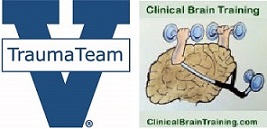I realize I am coming to this late, but I just listened to and read about the speech by LT Ray McCormack at FDIC several years ago talking about the safety culture and its detrimental effect on firefighting. I will once again stress I am not a firefighter but I am someone who has worked for 20 years to improve safety and decrease error.
The fundamental friction between the safety culture and experienced clinicians or firefighters is the fact that our process for improving safety is often increasing regimentation, decreasing variability, and standardizing investigations and operations. This is painful for experienced people to deal with, because they have done things by experience and gut feeling for years, often very successfully. Adding these safety processes can slow down operations, increases the number of steps you pass through in carrying out a plan, and in our case increases paperwork, all without adding much value, in the eyes of the experienced and competent provider. For someone who has done a heroic job of teaching people how to do things by applying their own large amount of experience, this is viewed as a waste of time. What I believe the LTs point was that these processes add time without adding value. If you don’t have time to spare, that wasted time could be the difference between carrying out a procedure successfully, or not.
But I would put forward my justification for safety processes. First, people forget things, especially in high stress situations of low frequency. There is no way to insure they remember that safety step 100% of the time other than through procedures. For the person who would never think of not taking that step, the checklist is idiotic. Unfortunately that person isn’t always the person we are trying to protect and we have to design our systems so the most inexperienced and dumb person will do the right thing 100% of the time. All it takes is one miss to cause a catastrophic outcome and that fact has been proven over and over.
What I tell people to do is view the safety procedures as part of carrying out the job, not some add on that is a burden. Stop investing emotions in fighting these safety processes, just learn them, do they efficiently, and move on. They are mostly double checks and are only verifying that you didn’t forget something and when you look at it dispassionately, the amount of time actually added by safety processes is small but the return on that time investment can be large.
Instead use your experience to adapt and revise the safety procedures to be more effective. Improve the education process so young firefighters, nurses, medics, and doctors don’t just learn checklists and mind-numbing routines, but learn WHY we are doing these things. My partner Dr Calland recently said that we should name every page in our guideline and safety manual after the patient whose care prompted the guidelines creation. As in firefighting, many of our guidelines grew from clinical errors and oversights and were built to prevent a recurrence of that problem in the future. We shouldn’t build guidelines and checklists out of every bad outcome, but we should examine every bad outcome to see if our present safety processes are sufficient.



 Subscribe in iTunes
Subscribe in iTunes